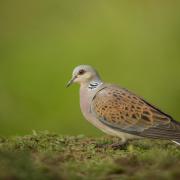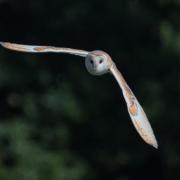Lindsay Want has some advice for getting the most from a day in the wilds
Lindsay Want has some advice for getting the most from a day in the wilds
Best with binoculars
Make a visit to Trimley Marshes and you won’t be needing your binoculars to see the cranes at the nearby Port of Felixstowe, but they’ll certainly come in handy to spot the Little Egrets and get up close and personal with the cormorants as they stand tall – relatively speaking – in the flat wet meadows. Created as a reserve only in 1990, the mosaic of habitats alongside the River Orwell here have been a stonking Suffolk success story. The impressive number of duck, geese and waders as well as the occasional rare feathered visitor means there’s always plenty to focus on.
A real belter
For the wildlife watcher who wants everything Sizewell Belts near Leiston has it all pretty much tided up. Dykes and watercourses lie in the broadest of valleys between vaguely discernable ridges of light sandy land. The combination of wetlands, wet woodland, heathland and sand dunes gives the area a real buckles and braces advantage in terms of outstandingly rich and attractive wildlife habitats. It’s a Suffolk stronghold for otter and water vole and home to Bearded tits and Bitterns and well as the skulking water rail.
Broad-ening your horizon
Up at Carlton Marshes on the edge of Oulton Broad and the River Waveney, the grazing marsh, fens and peat pools make for the Broads experience in miniature. Tiny Cetti’s warblers weave in and out of the reeds on their short wings. Woodcock and Lesser Spotted Woodpecker haunt the alder and willow woods. As spring begins to do its stuff, there’s so much to see in terms of floral and fauna if only you know where to look. A great place to get the youngsters wildlife watching with the local team putting on great regular activities for 6-12 year olds.
More flatland favourites
Head for the Blyth estuary if you fancy tinkering about by the water a while near Walberswick (Tinker’s Marshes are just north of the Common) or make for the mudflats of the River Alde to view the ebb and flow of the natural world from the Eric Hosking hide at Hazlewood Marshes. Further inland, the Sudbury Water Meadows which stretch from the heart of Gainsborough’s town towards Long Melford are perhaps best viewed from the lofty embankment heights of the railway walk. As well as easy-to-spot swans by the Stour, there’s sure to be plenty of tweets in the hedgerows. Nearby Arger Fen and Spouse’s Vale have aspirations to higher places lying in the Dedham Vale Area of Outstanding Natural Beauty. As well as mosaics of meadows and ancient hillside woodlands which are home to bats and badgers, there’s a superb boardwalk through the wet woodlands.


























